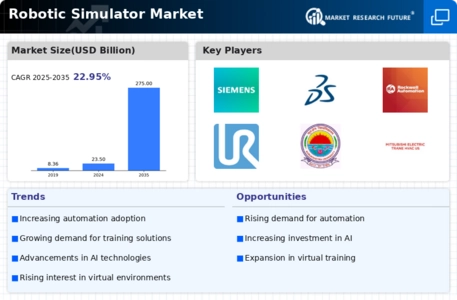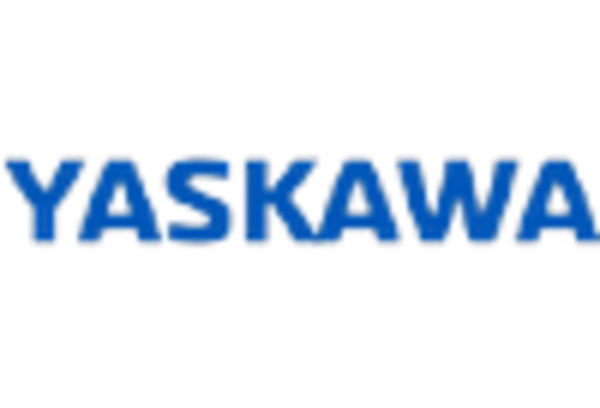Advancements in Simulation Technology
Technological advancements in simulation software and hardware are propelling the Robotic Simulator Market forward. Innovations such as virtual reality and augmented reality are enhancing the realism and interactivity of simulations, making them more effective for training purposes. The market for simulation software is expected to reach several billion dollars by the end of the decade, indicating a robust growth trajectory. These advancements allow for more complex scenarios to be simulated, which is crucial for industries that require high levels of precision and safety. Consequently, the Robotic Simulator Market is benefiting from these technological improvements, as they enable more effective training and operational planning.
Increased Investment in Workforce Training
The growing recognition of the importance of workforce training is driving the Robotic Simulator Market. Companies are increasingly investing in training programs that utilize robotic simulators to prepare employees for the challenges of modern automation. This investment is particularly relevant in sectors facing skill shortages, where effective training solutions are essential. The workforce training market is projected to grow substantially, with robotic simulators playing a pivotal role in bridging the skills gap. By providing realistic training environments, the Robotic Simulator Market is well-positioned to capitalize on this trend, as organizations seek to enhance their workforce capabilities.
Rising Demand for Automation in Industries
The increasing demand for automation across various industries is a primary driver of the Robotic Simulator Market. As organizations seek to enhance efficiency and reduce operational costs, the adoption of robotic systems has surged. According to recent data, the automation market is projected to grow at a compound annual growth rate of over 10% in the coming years. This trend is particularly evident in manufacturing, logistics, and healthcare sectors, where robotic simulators are utilized for training and operational optimization. The Robotic Simulator Market is thus experiencing a significant uptick as companies invest in simulation technologies to prepare their workforce for the integration of advanced robotics.
Growing Focus on Safety and Risk Management
The increasing emphasis on safety and risk management in various sectors is driving the Robotic Simulator Market. Organizations are recognizing the importance of training employees in a risk-free environment before they engage with actual robotic systems. This focus on safety is particularly pronounced in industries such as construction, manufacturing, and healthcare, where the potential for accidents is high. The market for safety training solutions is projected to grow significantly, with robotic simulators playing a crucial role in this evolution. By providing a safe platform for training, the Robotic Simulator Market is positioned to meet the rising demand for effective safety training solutions.
Expansion of Research and Development Activities
The expansion of research and development activities in robotics is a significant driver of the Robotic Simulator Market. As academic institutions and private companies invest in R&D, the need for sophisticated simulation tools becomes apparent. These tools are essential for testing and validating robotic systems before deployment. The R&D expenditure in robotics is expected to increase, with many organizations recognizing the value of simulation in accelerating innovation. This trend is likely to enhance the capabilities of robotic simulators, making them more attractive to researchers and developers alike. Thus, the Robotic Simulator Market stands to gain from the ongoing advancements in research and development.


















Leave a Comment